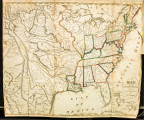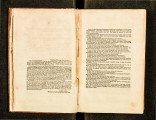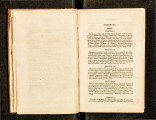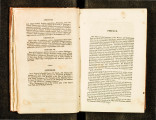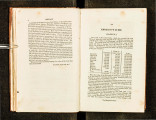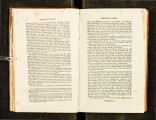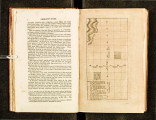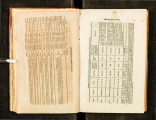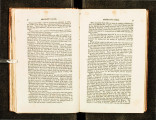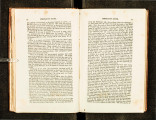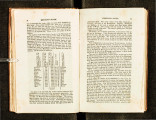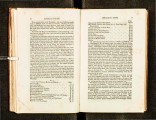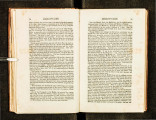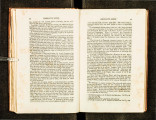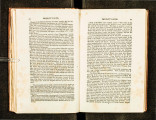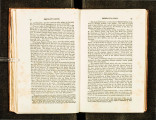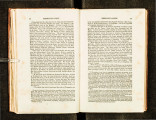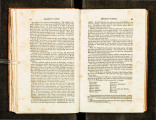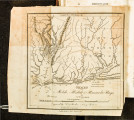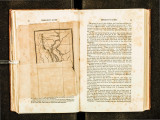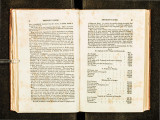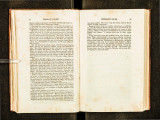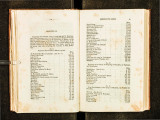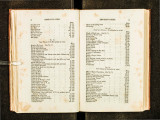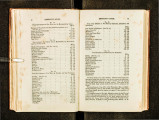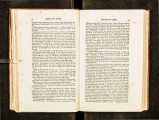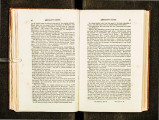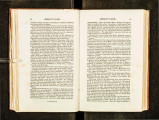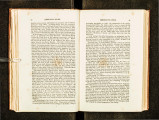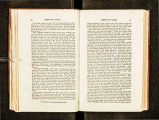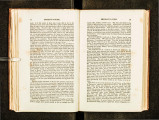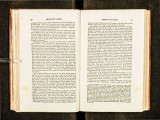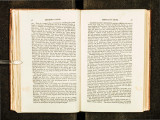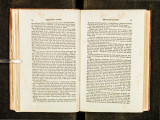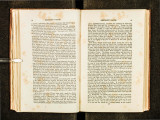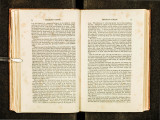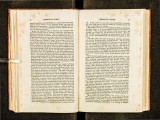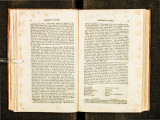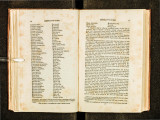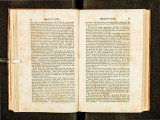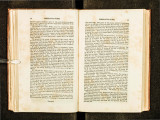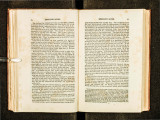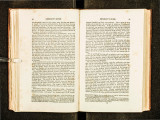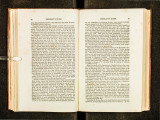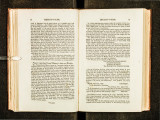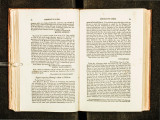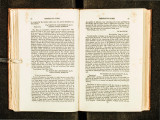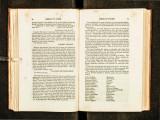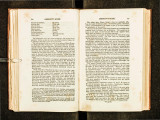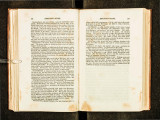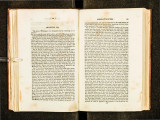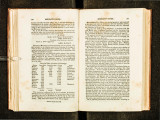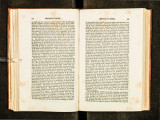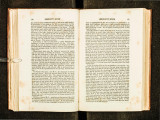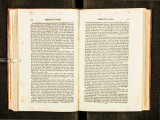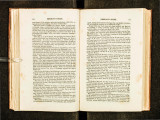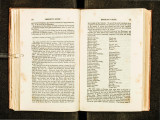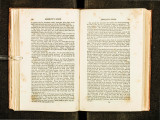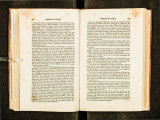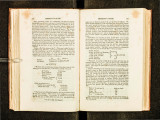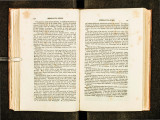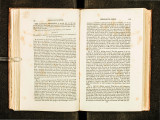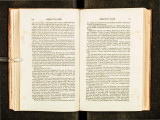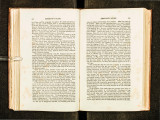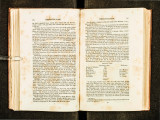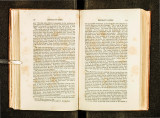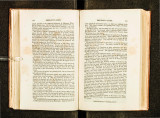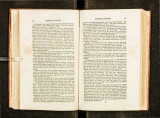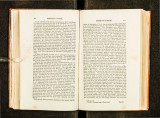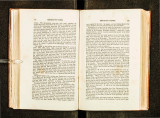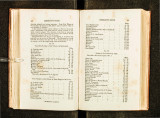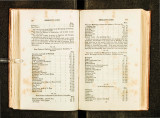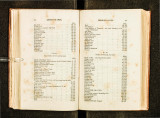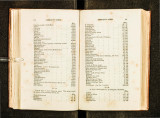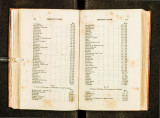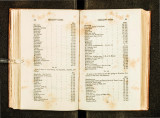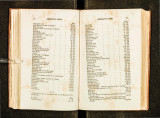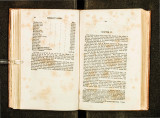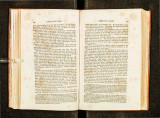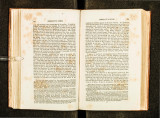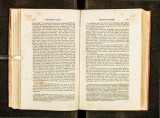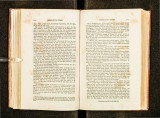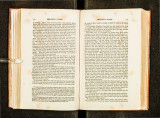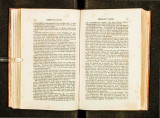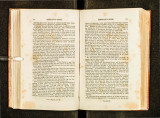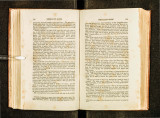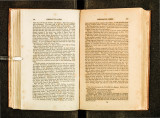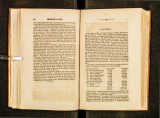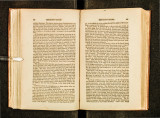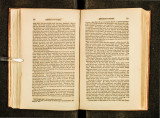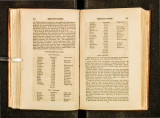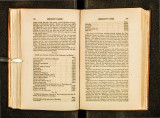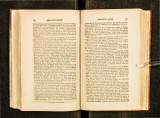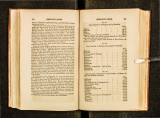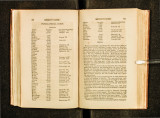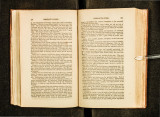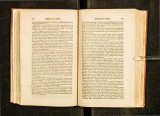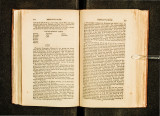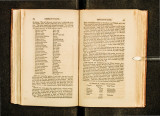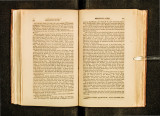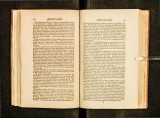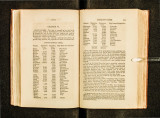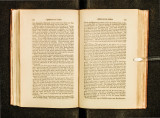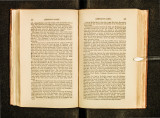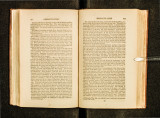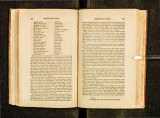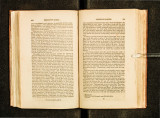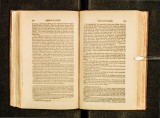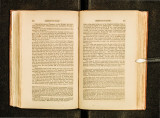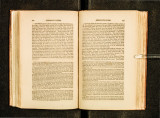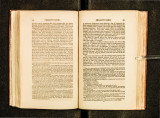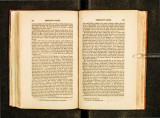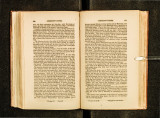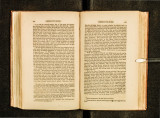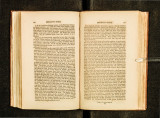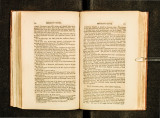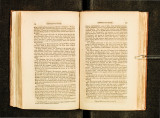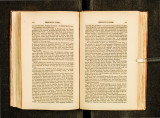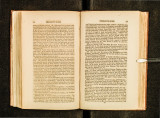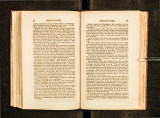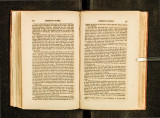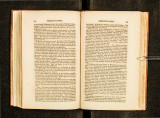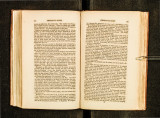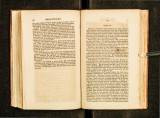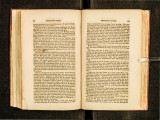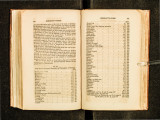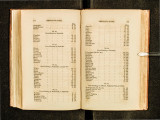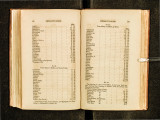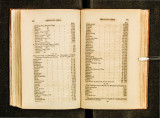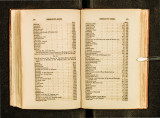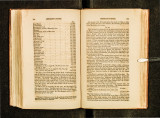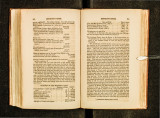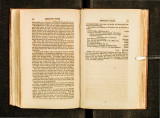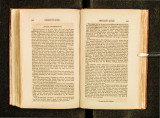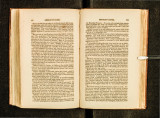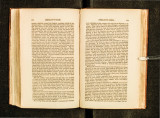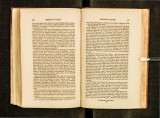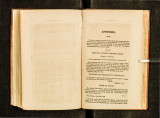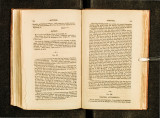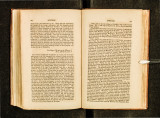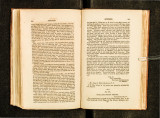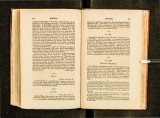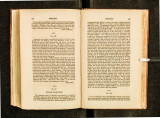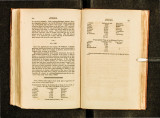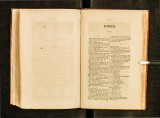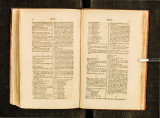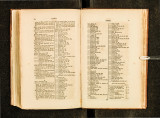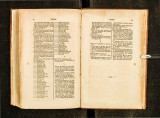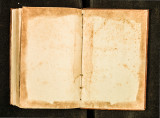| OCR Text |
Show EMIGRANT'S GUIDE. '' Departing from the chain that covers Autun,anJ advancing_ norlb to Langre~, the mountains become very high, and Langres 1s the most elevated town in the kingdom. Leaving L ngres, and c~ntinuing north, the chain divides to the right ; it j0ins the mouota1~s of Lorraine and to the left forms the eastern part of the basm of the Sein~. This left branch passes by Chaumont in Bassigny, Joinville, Bar-le-Duc, Rheins, and 'Rhetel, to Guise, which latter town is the northern point of the basin. The mountain then divides into four embranchments, forming a kind of cross. We have already spoken of one part ; the second runs from south to north,. a!ld reaches Oambresis; the third directs its com;se towardii Calais; and the fourth, winding westward, is lost at Havr_e de Grac~: it covers. Noyn, Beauv::~.is, Rouen, Caudebec, anJ Pans. Crossmg the Seme, at Havre, you would encounter a chain of hills, w~1ich, in ret_urn ing south, would gradually rise as far as Autun, the pomt from w~1ch we set out in our survey of this basin. Poiut-Audemer, Verneml, Mortagne, Chartres, Pithiviers, Muntargis, Chateau Cbinon, and,lastly A~tun ; would be visited in this transit. , " The basin of the Seine ought to be subdivided into two parts, from the embranchment drawn from Laon to Nevers : passing by Epernay, Sezane, Sens, Joigny, :m<.l .Auxerre, it would be easy, ill"' followmg this line, to recognise the embranchments. It i's from the advantage of these shelters, that these climates produce excellent wine , less spirituous, it may be granted, than those of the higher division of the basin of the Rhone, and these again less generous than those ·of the lower division of the IaUer basin. We do not speak here of the delicacy or aroma of these wines, but of the spirit drawn from them by distillation. It ought, however, to be remembered, that the approximation to the south ought to be brought into the calculation ; but we have already remembered, when speaking of the basin of the Rhone, the effects from variety in temperature arise less from southern distance than from the local shelters afforded by the mountains. '' In proportion as the shelters are depresseJ in the lower division of the basin of the Seine, the wines det~riorate in quality; they become flat and weak, as in the environs of Paris, and along the banks of the Seim~ from Paris to Rouen. In fiue, the more the shelte.r from Lhe north winds sink in elevation; the heat diminishes in its intensity, anJ the grape often cannot , ripen from the early frost. Cider has supplied the place of wine, since the thirteenth century, in Normandy*" u The apples from which is proJuced the cider of Normandy, was *It may be doubted, if known facts ar·e consulted, whethet· wines and the apple tree will ever tloUJ·ish in the same place. G11ou apples ar·e often produced uear Natchez, 011 the hills east of the Mississippi; but thou;;h that region is 110 duuut. of all places, contiguous to the della of t.he Mississippi, most s~itrtbl~ to the culture of the appl~ t.ree, it is t.her·e. notwithstauding the _elevatwu of the laud, exposed to a too 111teuae sun, anu wheu its fi'Uit is of good quality, the circumstance is a dcviatinn ft·om the ot·diuary course of natUI'e. Tl.tPrP. at·e many places on th(; higbr-r pat·ts of the .\1is'iissippi state, wher·e the travP.lkr· will fiud soil and situ~tiou, remarkably unalogous to the best wine countries of France. · EMIGRANT'S GUIDE. i.n the first instance transplanted from Spanish Navarre ; they are indigenous in the neighbourhood of Pampeluna ; and if not ingrafted in Normandy, they produce bad cider. ~ " The rivers that fluw in the basin of, and which contribute to form the Seine, are the Y onue, Ouin, Aure, Oise, Arman<;onl and the Marne. Let any person examine carefully the banks of these rivers, and he can form an accurate estimate of the alluvial deposit that can be formed from them,*" and of the degree of fertility of those deposites. Suppose, for instance, that the basin of the Seine was insolated, from Paris to Rouen, and confined to the Seine~ properly so called, the deposites would have been sterile, because the river flows through siliciou3 sand, and silex is inJurious to vegetation. If any earthy deposites are found, they are due to the Yonne, Oise, and lVIame. " Wine forms the princip::tl object of QU)ture in the higher parts of this basin. Chalk is opposed to the culture of small grain, and there is no compari on between tlw culture of the Jatter in the hiiTher and lower part of tbis basin. The chalk retains too much ~ater, or rather the water cannot penetrate and divide it, to enable the roots of vegetables to perwtrate the soil. These provinces are happy in being watered by frequent rain, and not exposed to the common and long droughts experienceJ in the southern provinces, since, if such ·was th~ cac:;e, t~1e ~halkJ;, ~~il. woul? be_ entirely unpr?ducti,·e. . B_as~n of the L(nre:- I hrs basm, like the preced~ng, ha3 two very OJsfrnct_ parts, Lbe l11_gher_ and lower. The higher compreh~nd~ the mountams of the Ltmosm, Auvergne, Horez, and Vivarais. This chain p~csents the same productions as does those of Dauphiny and Frandw Cnmpte. , ''Buck-weal,_ rye, and potatoes, with a little hemp, are the product~ of tho::-t.• mo_untaHJ_s. Though supplied with ex:celJent shelter!3, the too grNlt ele~a_f.Jon will not pe~mit the vine to ripen its fruit ; and except some pnVIlegecl cantons m very deep valleys, there are no vines. * lf the estua1·y of any river is scientifically examined, an estimate can at once be made of the geue1·al character of the country it waters. All rivers, wh~se mo~Jths fol'm low, l!at , and pr·otmded alluvial depositions, flow tbrouO'h fertrff! t'P.g•ons,. the soil o~ which is light, and easily detached from its nati~e plaee oftormattOIL All r1vers, on the other hand whose disc 1'aro-e to their re- . • . ' ~ b spec~JVe sPas, are wade bay , tlow thr-ough rocky or hard barren silicious soil. Of the for·!ller class of rivers, the most remarkable are, in Asia, the Wolga, Ganges, and Bun·arnpooter; in Africa, tbe Nile· in Europe, the Po and Danube, enrl i~ America, the Mississippi, Oronoco, and Amazon. Of the latter, the most pro~nu~ent examples in Asia at·e ~1e Euphrates, Oby, and Jenisea; in Africa the1 e. <~re none of consPquence ; 111 Europe, the Elbe, Weser and Tagus; in Amer·t~a, t.lw St. Lawrence, almost all the rive1·s upon the southeastern slope af the Unrl'ed States; the .Mobile, Colomdo of the gulf of Calafomia, and Rio de la Plate. Ther(• 1m: many shades of resemblance between rivers of these two classes, that appt·oxtmate them to euc!J other; but tue general pr·inciple is not affected. Wh_o e\'er has gained a corr·ect detailed knowledge of the physiognomy of the regmn neat· the mouth of any given river, bas gained also a very correct genera! ~now ledge of the couutry fl'om which the river d1·ew its waters. 1 n much attention cannot be given to tbls branch of topographical inquiry, as n~ rlfly false conclusions may b~ prevented o1· obviated, uy preservino: a rule so _rupJ:-, and which will scaJ'CP. eve1· deceive It will be seen, when ° our atte~ t wn 1: tm·ned to the east ward of the Misiissippi, how general the principle Will adm1t of application to p1·actical experience. I |





